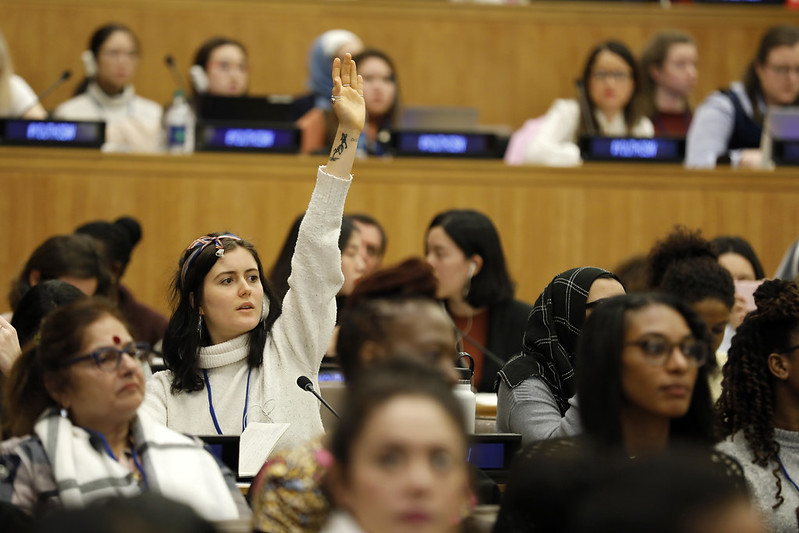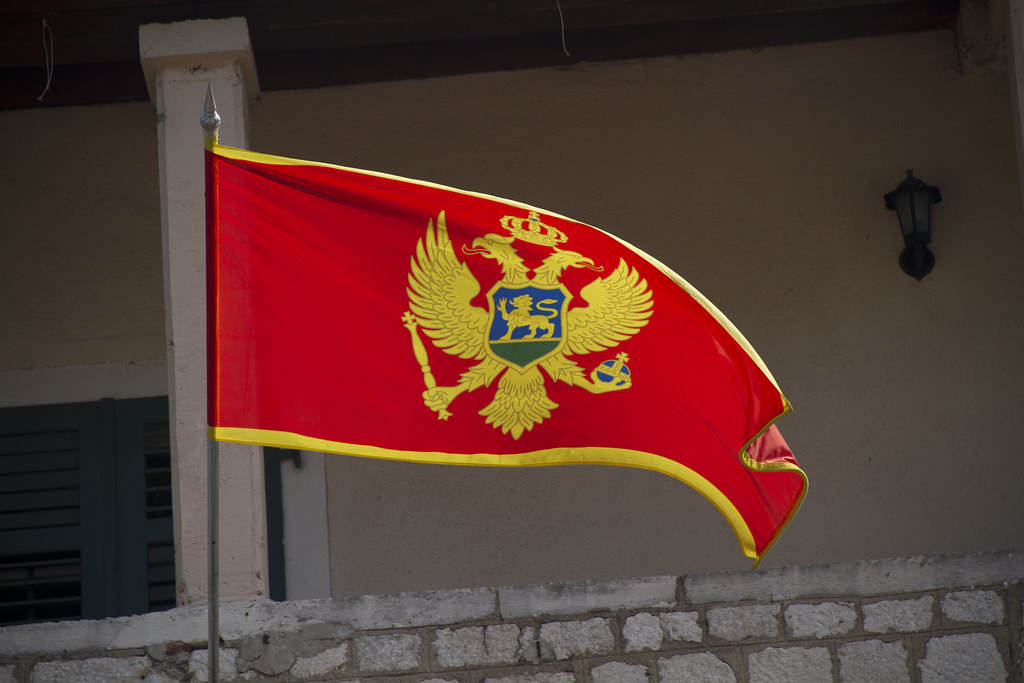With Russia’s invasion of Ukraine in 2022, the Arctic Council paused all operations for the first time since its inception. With rising environmental and geopolitical stressors, repairing diplomatic ties and scientific cooperation is critical to ensure strong governance and continued peace and security in the Arctic.
Spanning fourteen million square kilometres, the Arctic Ocean with its multi-year sea ice provides critical habitat for iconic ice-dependent species—walruses, narwhals, and polar bears. But, with 2024 the hottest year documented, and global temperatures expected to remain at record-breaking levels over the next five years, sea-ice cover in the Arctic Ocean is anticipated to contract to new lows year after year. As previously inaccessible waterways open, notions of the Arctic as an isolated and inhospitable region are shifting. Global attention is turning to the enormous economic potential of an ice-free Arctic, a prime area for shipping, tourism, and extractive industries. Most notably, China, though almost 1500 km from the Arctic Circle, proclaimed itself a “Near-Arctic State” in its 2018 White Paper, where it laid out its plans to bolster influence over future Arctic development opportunities and governance.
Against the backdrop of acute physical transformation and rising interest in economic opportunities, the Arctic is navigating its greatest challenge since the end of the Cold War. Following the full-scale Russian invasion of Ukraine in February 2022, Arctic Council Member States suspended all official meetings and Working Group activities, impacting 128 projects. Now, the Arctic is witnessing significant military build-up as mistrust rises and relationships sour between the Arctic States, especially with the expansion of NATO to include Finland and Sweden.
Adding to the tension, in January of this year, American President Donald Trump refused to rule out military action to annex Greenland, ostensibly for his country’s national security, or economic measures to force Canada to join the United States. The president’s more recent and persistent comments, threatening the sovereignty of America’s fellow NATO allies and Arctic Council Members, continue to strain once friendly partnerships. His realpolitik worldview may further signal turbulent times for the Arctic Council. Meanwhile, Russia, displeased with its isolation within the Council, has threatened to leave if its interests are no longer served within the organisation. China has responded that Beijing would not recognise the Council’s legitimacy if Russia, the largest Arctic state, is absent. As a formidable global actor, and with great Arctic ambitions, China’s rejection of the Arctic Council could frustrate efforts to tackle key issues, like shipping and sustainable fishing.
Since its inception in 1996, the Arctic Council has served as a “high level forum” between the eight Arctic States, as well as with the six Permanent Participants (Arctic Indigenous Peoples’ organisations) and Observers (non-Arctic States, NGOs, and intergovernmental organisations), providing opportunities for cooperation and collaboration. It has been the authoritative voice in Arctic governance; its immense contributions to climate change and Arctic biodiversity research have been widely acknowledged and celebrated. The Council’s focus on soft power issues, notably sustainable development and environmental protection, has allowed it to separate global tensions from Arctic affairs to maintain peace in the North. Consequently, following the end of the Cold War, Arctic narratives have highlighted “Arctic exceptionalism”—an area immune to the conflicts of the outside world. That perception has been challenged in recent years. In 2019, the Arctic States failed for the first time to issue a Ministerial Declaration due to the United States’ refusal to permit the term “climate change” in the final document. At the time, former US Secretary of State Mike Pompeo also criticized China, an Arctic Council Observer State, for its “words and actions,” and Russia for its “aggressive behaviour.” Cracks in this neighbourly Arctic community and its shared commitments began to show.
In his momentous 1987 Murmansk speech, former President of the Soviet Union Mikhail Gorbachev declared, “Let the North of the globe, the Arctic, become a zone of peace,” calling on Arctic States to unite in their efforts to protect the Arctic environment. This vision is in jeopardy, but room for optimism still exists. The Arctic Council was created on the belief that scientific cooperation between the Arctic States benefits all, far even from the Arctic Circle. Though observers have noted that the current Trump administration’s opposition to climate science and action could make working with the American delegation more challenging, the belief in Arctic exceptionalism endures. Russia, for instance, has remained steadfast in its commitment to furthering conservation measures in the Arctic, especially through the Conservation of Arctic Flora and Fauna Working Group. Science diplomacy, then, could serve as the catalyst to bring the Arctic States together again, with a shared goal of increasing understanding of Arctic ecosystems and species, and monitoring stressors before they cause irreparable harm.
The call for science diplomacy to mend Arctic ties is not without precedent. Even as the Crimean Crisis unfolded and the Syrian war split the Council Members, the Arctic States, along with China, Japan, Korea, and the European Union successfully negotiated the Central Arctic Ocean Fisheries Agreement (CAOFA), establishing the first ever fully precautionary environmental agreement. The CAOFA places a 16-year moratorium on fishing in the Central Arctic Ocean while the signatories collaborate to gather and share data on fish stocks in the region to ensure sustainable practices before the fishery is even open. With the new 2023 Biodiversity Beyond National Jurisdiction Agreement (BBNJA), also known as the High Seas Treaty, the Arctic Council again has an opportunity to take a lead in marine science and conservation. The Council has long hoped to create a network of marine protected areas in the Arctic Ocean; now with the tools offered by the BBNJA to create protected areas beyond national jurisdiction, the Council can use its regional expertise to identify key areas to preserve. This unifying exercise can focus the attention of the Arctic States on common goals, with spillover benefits for other areas of diplomacy.
The Arctic Council has weathered serious challenges these past few years. In 2023 it was unclear how, with Arctic Council diplomatic meetings on pause, the Chairship could transfer from Russia to Norway. Two years on, Norway succeeded in leading the Council through a tenuous period, while working to restore bruised relationships. While, at the time of writing, diplomatic-level meetings are still on pause, Working Groups have since recommenced some projects—a step in the right direction. This past May, Chairship of the Arctic Council transferred to Denmark. Greenland’s Minister of Foreign Affairs Vivian Motzfeldt will lead the Chairship, with a strong focus on climate change, biodiversity, and the marine environment. Denmark and Greenland will face their own challenges as Chair as they seek to bolster the Arctic Council while addressing the sticky issue of President Trump’s desire to annex Greenland. But they remain committed to building a cohesive and inclusive Arctic community.
In October 2024, Maria Varteressian, State Secretary for the Norwegian Ministry of Foreign Affairs, warned “If we lose it, we won’t get it back. The Arctic Council is at the heart of Arctic cooperation, and it is irreplaceable.” The stakes for preserving the peace and protecting the fragile Arctic environment are monumental. Fortunately, despite setbacks, the foundation for cooperation in the Arctic remains strong. The Arctic States and Permanent Participants recognise their collective duty to serve as leaders in Arctic conservation, and as promoters of peace and stability. The value of the Arctic Council as the foremost intergovernmental forum for Arctic issues and diplomacy is greater than ever. It must now adapt to new geopolitical realities within the context of a rapidly changing climate. How the Council navigates this rocky moment in its history will have effects far beyond the Arctic Circle.
Carol Dyck is a doctoral student in the Faculty of Law at Western University in Canada. Her research focuses on marine and international environmental law, particularly on deep seabed mining and Arctic issues.
This article is published under a Creative Commons License and may be republished with attribution.





